
It’s true: A vintage fur coat is the epitome of old school, Hollywood glamour. If you are scouring local flea markets and consignment shops for a real vintage fur piece, you do not want to buy a faux, retro replica by mistake. Whether you are an advocate for faux fur or love to wear the real thing, you will need expert tips to distinguish the sumptuous and synthetic pieces from the luxurious and authentic ones.
Step 1
Roll the vintage fur between the index finger and the thumb to test for authenticity. Real fur feels soft and smooth to the touch and will roll effortlessly between your fingers. Fake fur, however, will not roll easily, and feels rough and stiff.
Step 2
Divide the fur with your fingers to examine the base of the hairs. The hairs of genuine vintage fur pieces are uneven in length and anchored to a piece of white or tan animal leather or skin. Coats or stoles featuring fake pelts have simple, uniform hair fibers sewn together to a piece of synthetic, non-leather fabric.
Step 3
Burn the fibers. If you own a faux or real vintage coat, remove a few hairs from an inconspicuous place on the garment to test. Using a pair of tweezers, remove three or four hairs from the coat, stole or hat. Place the fibers in a non-flammable dish in a well-ventilated area. Burn the fibers with an extra-long lighter or a long-stem match. Genuine fur hair gives off a human hair odor, while synthetic faux hair fibers do not.
Step 4
Check the fur manufacturer’s inside label. The two most commonly used synthetic fur materials are polyester and acrylic. An inauthentic vintage fur may list the synthetic fibers on the inside tag for cleaning and laundering of the fur. After 1951, any genuine fur sold in the United States must carry a Fur Label Authority (FLA) tag to guarantee its authenticity.
Related Articles
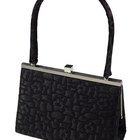
How to Care for and Clean Vintage ...

How to Clean a Chamois Leather Jacket ...

How to Spot Counterfeit Tommy Hilfiger
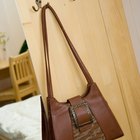
How to Identify Vintage Purses
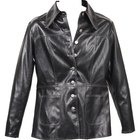
How Can I Take the Shine Off My Fake ...

How to Remove Makeup From a Black Suit ...

What Are Persian Lamb Coats?

How to Get Fashion Tape Off of Clothes

How to Clean an Old Suede Vest
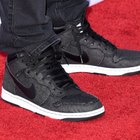
How to Tell Real Shoes Like Airforce ...

How to Spot Fake NBA Jerseys
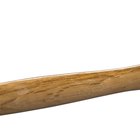
How to Repair a Rivet Type Button on ...

How to Tell if a Baseball Jersey is ...

How to Defrizz a Wig Without Washing It

How to Get Rust off a Fake Gold Necklace
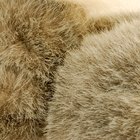
How to Clean Fake Fur

How to Defuzz a New Fleece Jacket

How to Fray a Jean Jacket

How to Tell a Real Tiffany's Necklace ...

How to Fix Cuts in Polyester Clothes
References
Resources
Writer Bio
Mimi Abney is a lifestyle writer specializing in online content for women. Her work has appeared in NewsOK.com and "Keepsake Magazine," among other publications. With over 15 years of writing and editing experience for the web and print, Abney is also a contributor to online health, beauty and fashion publications. She holds a Bachelor of Science in biology from Spelman College.
Photo Credits
George Marks/Retrofile/Getty Images